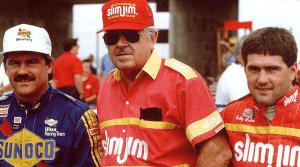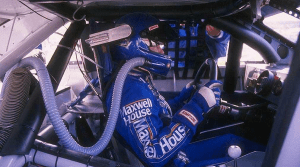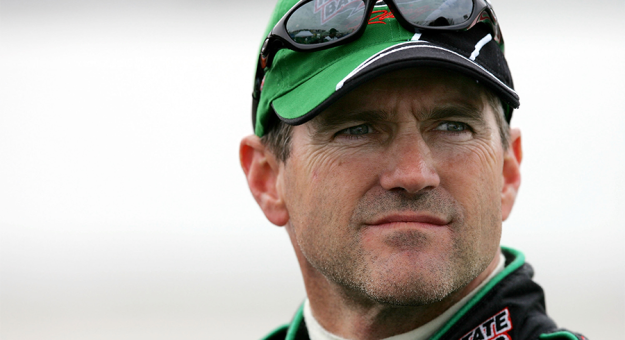Editor’s Note: This is the first of a three-part series on NASCAR Hall of Famer Bobby Labonte. Part two will run tomorrow.
Before becoming a NASCAR Hall of Fame inductee, Bobby Labonte was just a kid wanting to race.
The Corpus Christi, Texas, native had an interest in quarter-midget racing at the age of 9, but a racing career was unfathomable at that point.
Labonte’s brother Terry, who is eight years older than Bobby, had already set his sights on a stock car career.
Bobby Labonte’s desire to compete in quarter midgets was put on hold.
“When Terry was old enough to drive stock cars, he started driving stock cars. My parents couldn’t divide and conquer quarter midget racing and stock cars,” Labonte told SPEED SPORT. “So when we both did quarter midget racing, we’d all go together. When we couldn’t divide and conquer with stock cars, on weekends, then the quarter midgets went by the wayside.
“Then they gave me a mini bike. I got a mini bike, and I’m like, ‘OK, I really want to do quarter midget racing.’ So evidently about that time is when I kind of had an inkling of like, ‘Hey, I really did like my quarter midget racing.’
“I know that’s kind of young, but obviously, when you were doing it, you didn’t really know any different than when you didn’t do it. You kind of went like, ‘OK, I kind of miss that.’ So, my dad (Bob) got me a go-kart when Terry moved to North Carolina, and I started racing again.”
Once Labonte got back behind the wheel, a spark was ignited.
Labonte competed across the country in quarter midgets, before eventually making the step up to go-kart racing.

While older brother Terry vaulted into the NASCAR Cup Series full time in 1979, Bobby and his father Bob eventually formed their own NASCAR Xfinity Series team, making select starts from 1982-’89 before gaining the funds needed to operate on a full-time basis in 1990.
“Things were different back then. When I got my first Busch Grand National sponsor in 1990, when I got GoodMark Foods, I had employees and I’m a self-employed employer, I had employees to pay,” Labonte said. “We had sponsors, we had commitments and stuff like that, and I’m racing and I don’t know how I paid myself at the time.
“But I was making money racing at that time. So that was the first time that I really said, ‘OK, you’re making money doing this, you’re not spending all your money racing late model stocks, and you end up with zero at the end of the year.’
“I’d say 1990 was the first time that I said, ‘Hey, I’m actually getting paid to drive my own car,’” Labonte said. “So I guess at that point in time, I realized, ‘Man, wouldn’t it be great if I could keep doing this for a couple more years?’
“Who knew what it would lead to, but I was thinking at that point in time, I was living a dream. I was like, ‘This is probably as far as I’m gonna go.'”
Little did Labonte know what lied ahead.
Three consecutive seasons of top-five runs in the points included winning the series championship aboard the No. 44 Penrose Firecracker Oldsmobile in 1991.
The title allowed Labonte to make a name for himself within the NASCAR garage and helped develop his skillset.
“It was important for me, because that’s the path I had to take to get there. I wasn’t gonna drive for anybody else probably,” Labonte said. “The opportunity was more because I kind of knew how to work on race cars, I knew how to build cars, I knew how to be a mechanic, I knew how to be a fabricator.
“That was easier for me at the time to say, ‘If I can get the money, then we can build the cars, I can buy a truck and trailer, and we could go race.’ I knew shocks and springs, I knew all that stuff,” Labonte continued. “I thought that was really, really good.
“I think it helped me a ton to start with, because at that time, I knew my cars, and that gave me the opportunity to drive for Bill Davis, and then to drive for Joe Gibbs.”

Labonte’s path led him to Bill Davis Racing in 1993. He drove the No. 22 Maxwell House machine for two Cup Series campaigns.
After the 1994 season, Labonte had a decision to make.
“I wanted to be with Bill Davis for a long time. Sponsors were coming and going and not sure what the next thing was going to be, then it gets down to the end of the year then you get kind of nervous,” Labonte said. “You can’t wait until December 7 and say, ‘Oh, we got a sponsor, we’re gonna race next year.’ Deals were made before that.”
With Dale Jarrett leaving Joe Gibbs Racing, the No. 18 Interstate Batteries machine needed a driver.
Labonte felt the move would be a step up in his career, considering the team had a winning track record that included a Daytona 500 victory three years prior.
“They had Hendrick motors, they had sponsors,” Labonte said. “I just thought that was for me. I thought, ‘If I’m going to advance here, we’re doing it with Bill Davis, but we’re not sure about sponsors.’
“With Joe, it became opportunity that, I can see, ‘Hey, it’s an opportunity to get better, more pressure, but you’re gonna have equipment that’s more proven.’ It was just like it made sense to me to make that step, to get with him and, hopefully, run better. That’s what your goal is, to run better and win races.”
The Gibbs and Labonte pairing quickly became a formidable force in the Cup Series, hitting the ground running with three victories in 1995.
“That was good there for the whole year. I think in 1996, we had our own engine program, so it started off a little bit as a building process with engines,” Labonte said. “So we won a race there, we won another in 1997. The engines kept improving, our cars, competitive-wise, we were trying to find the right setup.
“I think towards the middle of 1998, Jimmy (Makar, crew chief) and my engineer Derrick Jones, myself, everybody there, we kind of hit upon a package. The feel that I was wanting in the car, everything was pulling at the time aero-wise. We kind of hit upon some stuff in the middle of 1998.”
With the team firing on all cylinders, Labonte’s best seasons were just around the corner.
Check back for part two — tomorrow.
Follow @DHoffmanMedia22